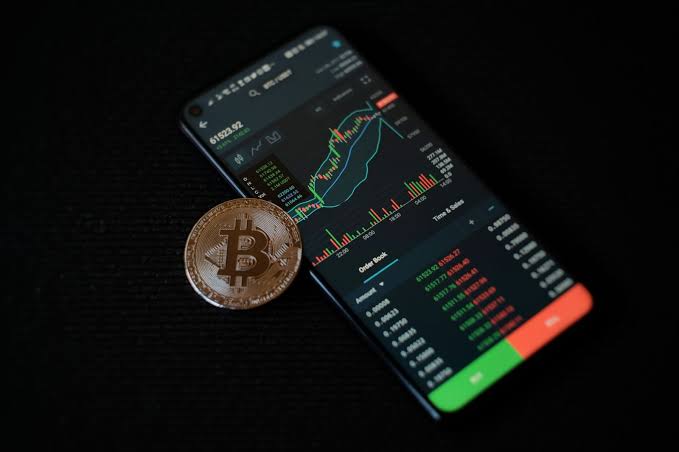Key Takeaways:
- Points systems have become a significant part of the modern marketplace, affecting consumer behavior and business strategies.
- Point accumulation can enhance customer engagement and foster loyalty, benefiting various industries.
- Implementing a points-based economy requires understanding consumer psychology and the proper technological infrastructure.
- The future of points-based commerce looks promising, with innovations that continue to redefine value and customer interaction.
Introduction to a Points-Based Economy
The marketplace is witnessing a paradigm shift where points act not just as incentives but as a genuine currency that drives consumer engagement significantly. The move towards gamified commerce, wherein points play a central role as a rewards program for game creators, has transformed how businesses interact with customers. Unlike traditional transactions that rely on a straightforward exchange of goods for money, point-based transactions create an additional layer of emotional, psychological, and strategic value for both the buyer and seller.
The success of such reward programs lies in the psychological nuances they stimulate. In essence, these point systems leverage human propensities for achievement and gratification—a customer accumulates points through various interactions with a business, including making purchases, leaving reviews, or participating in events. Customers inherently find joy in earning these points, which can later be redeemed for rewards, discounts, or even exclusive access to new products.
These programs give businesses a dual opportunity: to promote customer retention by creating an engaging rewards loop and gathering insights from point redemption patterns. This can illuminate customer preferences and shopping behaviors to inform product development and marketing strategies. As companies discover the value points systems add to their businesses, more are adopting and refining their methods and platforms to maintain relevance with their evolving customer base.
Advantages of Point Systems for Businesses
For businesses, the introduction of a point system can be a game-changer. Such systems incentivize customers to return more frequently and offer a way to differentiate in a crowded marketplace. Informing customers that each purchase moves them towards a substantive reward encourages them to choose one brand over another. Moreover, as customers engage with the points system, companies can collect valuable data on purchasing trends and feedback on services and products and develop a more precise customer profile.
This data is a cornerstone for crafting personalized marketing communications and improving customer service. Insights gleaned from point redemption trends can inform stock management, special offers, and event planning to ensure that customer needs are met preemptively. Additionally, programs that successfully implement point-based incentives serve as a rich resource for case studies. For instance, an analysis in the Harvard Business Review delves into how reward systems can be leveraged to fortify customer relationships and drive sales growth.
Point Systems vs. Traditional Currency
Consumers often perceive the value differently than traditional currency when they engage with point systems. Points can sometimes be perceived as ‘bonus’ or ‘extra’ value, inspiring a sense of earning something additionally for purchases they were likely to make anyway. This perspective shift is integral to why point systems can be more effective than discounts in driving long-term customer loyalty. Moreover, the incremental nature of earning points often leads consumers to increase their purchase frequency and amounts to reach the next reward threshold sooner.
The debate on how points compare with traditional currency is ongoing, but one thing is clear—points have begun to embed themselves deeply within consumer purchasing habits. Today’s tech-savvy consumers understand the quantitative and qualitative value of points, especially when redeeming them for a diverse array of rewards, such as exclusive content, personalized experiences, or significant discounts on future purchases. As commerce continues to evolve, the potential for points to cement themselves as a core currency component appears more possible than ever.
Setting Up a Points-Based System
Implementing a points-based rewards system requires meticulous planning and an in-depth understanding of the target audience. A company must clearly define its program goals: to increase average order value, improve customer retention, or enhance brand loyalty. Once the purpose is established, the next step is to design the structure of the rewards program, keeping in mind the balance between attainability and desirability of rewards. The rewards must be compelling enough to motivate customers and simple enough for them to understand how they can earn and redeem points.
Technology plays a pivotal role in managing such systems. State-of-the-art platforms empower businesses to track points earned and redeemed in real time. They offer seamless integration with existing customer relationship management (CRM) tools and payment systems, ensuring the customer’s journey with the points system is frictionless. These technological solutions must also be secure and capable of preventing fraud, which is a significant concern when dealing with virtual currency.
The Impact of Points on Consumer Behavior
A well-crafted points program can have profound effects on shopping behavior. The anticipation of earning points can alter the perception of a product’s value and the desirability of a service. The psychological payoff of accumulating points and attaining rewards triggers an emotional response in consumers, encouraging them to make one-off purchases and develop brand affinity. Extensive research, such as studies conducted by the Pew Research Center, indicates that consumers show a marked preference for brands offering rewards programs, often citing them as a factor in their purchasing decisions.
Points Systems Across Different Industries
Point systems have seen widespread adoption across industries, illustrating their versatility and appeal. In gaming, points drive in-app purchases and sustain engagement by rewarding user participation with exclusive content or features. Retailers use points to encourage repeat business and brand loyalty by offering special discounts and advance access to sales or new products for point-holding customers. The travel industry perhaps pioneered the concept with frequent flyer programs, where accumulated miles lead to free or upgraded flights, access to airport lounges, and alliances with other service providers for cross-promotions.
Point Systems and Brand Loyalty
Emotion is a strong influencer in purchasing behavior, and point systems tap into this sentiment by enabling customers to feel rewarded and recognized for their loyalty. Creating tiered programs where continued engagement leads to progressively higher levels of rewards cultivates a sense of belonging among customers. Customers’ affiliation with the brand strengthens as they strive for the next level in the system. This emotional investment is a powerful retention tool, as customers are often reluctant to abandon their points and the associated status they’ve earned within the program.
The Technology Powering Point-Based Transactions
The backbone of an effective points system is the technology that powers it. Tailored software solutions facilitate the tracking and redemption of points, incorporate security measures to deter fraudulent activities, and integrate with sales and CRM tools to maintain a consistent and up-to-date picture of customer interactions. Compliance with privacy laws and data security is paramount, as such systems often handle sensitive customer information. Companies must invest in technology that can keep pace with their programs’ growing complexity and scale to maintain high trust with participating customers.
Consumer Perspectives on Point Systems
Understanding the customer’s view on point systems can provide valuable insights into what works and what could be improved. Consumer surveys suggest a high level of engagement and satisfaction with points programs. Still, they also highlight areas of friction—such as overly complex rules for earning or redeeming points or rewards that don’t align with customer interests. Personal accounts and individual testimonials can also shed light on these systems’ real-world impact and appeal, helping businesses finetune their offerings to meet consumer expectations better.
The Future of Points-Based Commerce
As we gaze into the future of commerce, points systems are poised to play an increasingly prominent role. Innovations in technology, the integration of artificial intelligence for personalized offerings, and shifts in consumer values all signal that points may become a central tenet of transactional behavior. As new platforms emerge that streamline the earning and redemption of points, and as companies continue to explore the potential for points to drive sales and foster community, the landscape of loyalty programs is ever-changing, promising a dynamic and exciting future for points as currency.




